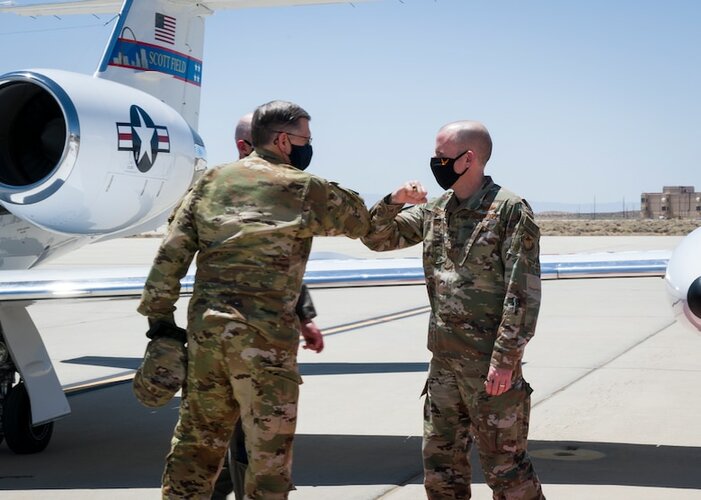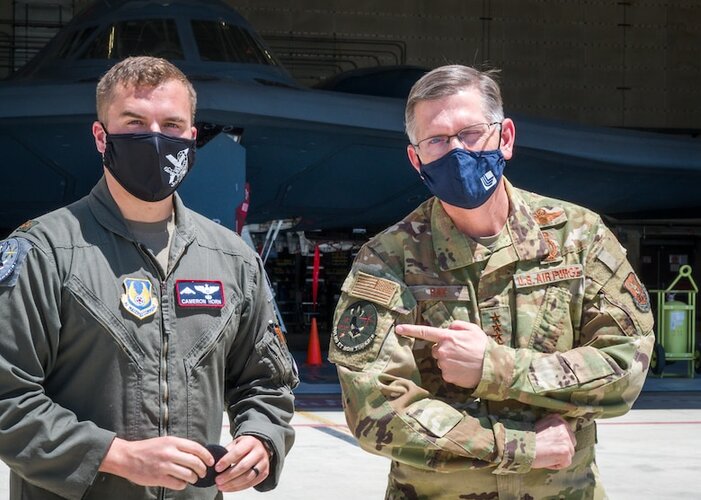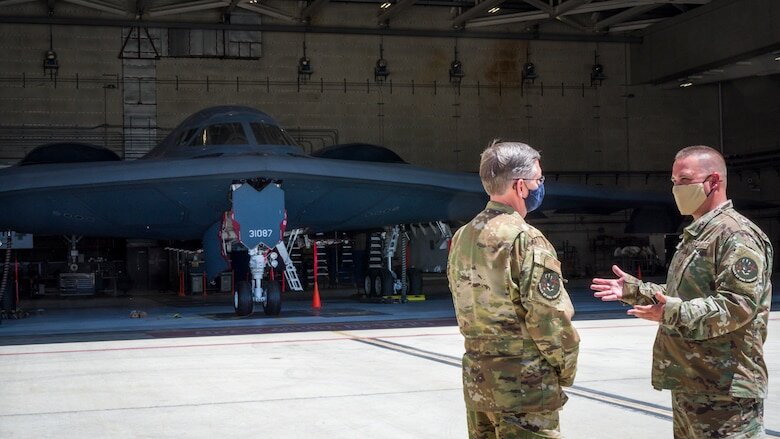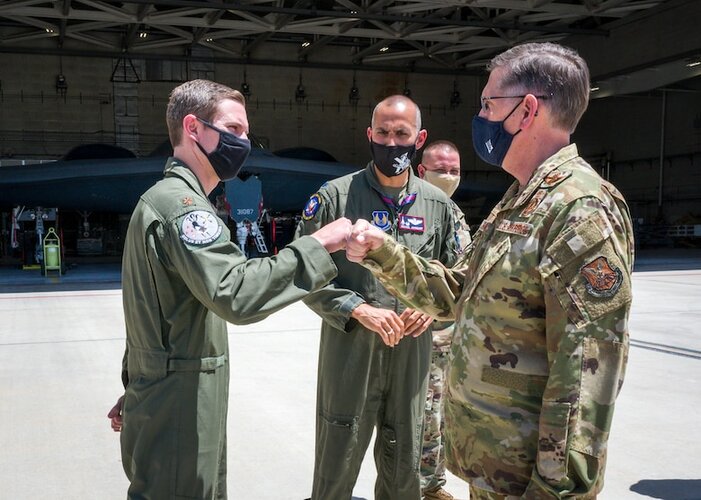You are using an out of date browser. It may not display this or other websites correctly.
You should upgrade or use an alternative browser.
You should upgrade or use an alternative browser.
Northrop Grumman B-21 Raider (LRS-B)
- Thread starter TomS
- Start date
- Joined
- 21 April 2009
- Messages
- 13,761
- Reaction score
- 7,703
B-21 Completes Redesign With No Cost, Schedule Impact: USAF | Aviation Week Network
U.S. Air Force officials say the B-21 program was not slowed down by a need to redesign the engine inlet, with the second aircraft now entering the production system.
The program really appears to be progressing rapidly. The above article mentions that weapons integration has been reduced from "years" to "months", which is interesting. I assume this aircraft is using a lot of digital design/twinning and that is allowing for rapid changes without major schedule changes. A program being on time and on budget would be a welcome change. I can think of like two other aircraft programs in recent times that achieved that, and both were adaptations of existing airframes (F-18E/F and P-8).
The best comparison would be with a plane of similar type/mission set and significance. Meaning the B-2.
Winning design proposal for B-2 was chosen in October 1981.
First prototype flight was in July 1989.
Sometime in mid 1980s there was a redesign, due to sudden shift in USAF requirements. James Goodall mentioned in his 1992 book on US stealth planes that the redesign cost the team two years. Whether that is true, or it took less is hard to know. If anyone has other sources and claims on the B-2 redesign woes - that'd be great.
Anyway. B-21 had its winning design proposal chosen in October 2015.
First flight of the prototype seem to be expected around mid 2022. Guessing the exact month is, of course, impossible.
So, B-2 development up the first prototype took 7 years and 9 months.
B-2 development, IF the redesign indeed took 2 years, would have lasted nearly 6 years.
B-21 development up the first prototype flight is on track to take 6 years and 8 months, give or take a month.
So this first part of the development, actually getting the design to the flying prototype, isn't really quicker.
But maybe the second part of development, verifying and testing the prototype, validating the design and serial standard planes and establishing the ecosystem for support so the first bomber unit can stand up - that may be quicker. We will see.
First serial standard B-2 was delivered to USAF in December 1993.
In January 1997, first B-2 unit was declared operational.
Whether that's a good timetable for comparison remains to be seen. B-2 funding may have suffered due to end of the Cold war so finishing up development and having units standing up may've not been a priority.
Winning design proposal for B-2 was chosen in October 1981.
First prototype flight was in July 1989.
Sometime in mid 1980s there was a redesign, due to sudden shift in USAF requirements. James Goodall mentioned in his 1992 book on US stealth planes that the redesign cost the team two years. Whether that is true, or it took less is hard to know. If anyone has other sources and claims on the B-2 redesign woes - that'd be great.
Anyway. B-21 had its winning design proposal chosen in October 2015.
First flight of the prototype seem to be expected around mid 2022. Guessing the exact month is, of course, impossible.
So, B-2 development up the first prototype took 7 years and 9 months.
B-2 development, IF the redesign indeed took 2 years, would have lasted nearly 6 years.
B-21 development up the first prototype flight is on track to take 6 years and 8 months, give or take a month.
So this first part of the development, actually getting the design to the flying prototype, isn't really quicker.
But maybe the second part of development, verifying and testing the prototype, validating the design and serial standard planes and establishing the ecosystem for support so the first bomber unit can stand up - that may be quicker. We will see.
First serial standard B-2 was delivered to USAF in December 1993.
In January 1997, first B-2 unit was declared operational.
Whether that's a good timetable for comparison remains to be seen. B-2 funding may have suffered due to end of the Cold war so finishing up development and having units standing up may've not been a priority.
The B-2 redesign I believe was attributed to the requirement that the B-2 be able to penetrate at low level. This required the B-2 to adopt the saw tooth tail form that was strengthened from the original single tail cone - the B-2 originally had the same shape as the B-21. The low level requirement was apparently added because the USAF decided that stealth would ultimately be defeated in the B-2's service life.
bring_it_on
I really should change my personal text
- Joined
- 4 July 2013
- Messages
- 3,679
- Reaction score
- 3,865
Anyway. B-21 had its winning design proposal chosen in October 2015.
First flight of the prototype seem to be expected around mid 2022. Guessing the exact month is, of course, impossible.
So, B-2 development up the first prototype took 7 years and 9 months.
B-2 development, IF the redesign indeed took 2 years, would have lasted nearly 6 years.
B-21 development up the first prototype flight is on track to take 6 years and 8 months, give or take a month.
The B-21 EMD program started in late Q2 of FY16. They have two aircraft already in the pipeline. An FY-22 first flight would make it roughly 6 years from when they initiated work on the EMD. But reading between the lines of some of the things that have been said/written, it appears that they've set up the program to begin delivering mature aircraft relatively soon so the focus is on shortening the second half of the development program when you are testing and maturing the systems and getting ready to hand a relatively mature system to the operators. If they can do that by FY-26-27 then that would be pretty good given the current trend in complex combat aircraft programs stretching out years. And of course, if they can do that by sticking to the APUC estimates then that would be even better. So probably more important would be to see how the program is tracking to delivering the ultimate capability and hardware/software mix/maturity that the USAF is going to declare the system operational with. Encouraging that they've been consistently stating, for the last couple of years (updates), that the program is tracking to cost and schedule with the latter being more than just first flight or roll-out and likely also factoring in other more important milestones (like IOC).
Last edited:
bring_it_on
I really should change my personal text
- Joined
- 4 July 2013
- Messages
- 3,679
- Reaction score
- 3,865
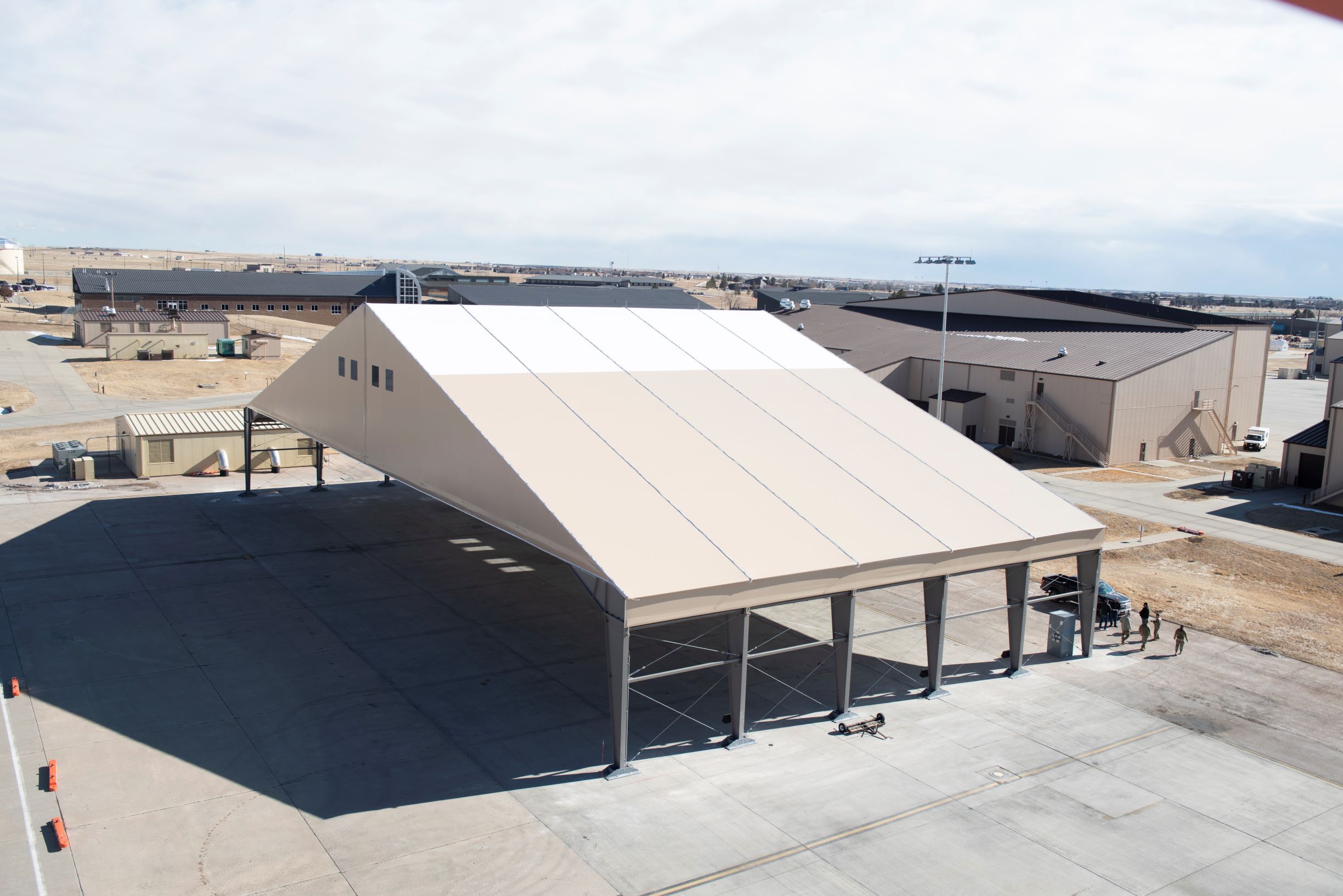
B-21 Bomber Shelter May Reveal Size of Secret Jet | Air & Space Forces Magazine
An image of a prototype temporary shelter for the B-21 bomber at Ellsworth Air Force Base, S.D., may divulge the dimensions of the aircraft.
dark sidius
ACCESS: Top Secret
- Joined
- 1 August 2008
- Messages
- 1,199
- Reaction score
- 1,073
It seem to be more compact than the B-2, it could be 19 meters lenght and 40/42 meters wingspan, I don't think it could be less than 19 meters lenght with the need of a big weapon bay with the size of futur weapon like the hypersonic missile. This size is suprising it is more like a big fighter than a bomber, with two enhanced F-135 engine like, it would have a good amount of power.
Remember that those kind of tensioned structures (and I wonder why they didn't go for aluminum to ease deployment) are modular. This being a test article, it might only be representative of the production design and could have been restricted in size by the surface area allocated for the test.
- Joined
- 1 April 2006
- Messages
- 11,402
- Reaction score
- 10,340
Their calculations are about 20% wrong for the hangar size, being about 200x100 ft IRL
Would be stupid to build a hangar that (1) can't hold slightly bigger(?) B-2 and (2) can reveal B-21 size.
Would be stupid to build a hangar that (1) can't hold slightly bigger(?) B-2 and (2) can reveal B-21 size.
Last edited:
dark sidius
ACCESS: Top Secret
- Joined
- 1 August 2008
- Messages
- 1,199
- Reaction score
- 1,073
I m betting 40m x 19m,I'm betting on 150ft x 60 ft (45m x 18m) for the B21.
The stand alone wings apart from the diamond mainframe will be proportionally larger since it doesnt have the saw tooth back end.
- Joined
- 6 August 2007
- Messages
- 3,900
- Reaction score
- 6,001
Looks humid.
B-21 Bomber Shelter May Reveal Size of Secret Jet | Air & Space Forces Magazine
An image of a prototype temporary shelter for the B-21 bomber at Ellsworth Air Force Base, S.D., may divulge the dimensions of the aircraft.www.airforcemag.com
- Joined
- 16 April 2008
- Messages
- 9,618
- Reaction score
- 14,532

B-21 Bomber Shelter May Reveal Size of Secret Jet | Air & Space Forces Magazine
An image of a prototype temporary shelter for the B-21 bomber at Ellsworth Air Force Base, S.D., may divulge the dimensions of the aircraft.www.airforcemag.com
Or maybe not...
An experimental, temporary shelter for the B-21 recently erected at Ellsworth Air Force Base, S.D., which appeared in press release photos to be substantially smaller than B-2 hangars (and suggested a smaller size for the B-21), is actually 200 feet wide by 100 feet deep, the Air Force said in response to a query. That makes it large enough to accommodate the B-2, which has a wingspan of 172 feet and a length of 59 feet, and reveals nothing about the dimensions of the B-21.

B-21 Temporary Shelters Could Also Shelter B-2s | Air & Space Forces Magazine
A temporary runway shelter being tested for the secret B-21 bomber will also be large enough to protect B-2 bombers from the elements, according to information provided by the Air Force.
RavenOne
ACCESS: Top Secret
- Joined
- 18 June 2008
- Messages
- 1,005
- Reaction score
- 2,690
Looks humid.
B-21 Bomber Shelter May Reveal Size of Secret Jet | Air & Space Forces Magazine
An image of a prototype temporary shelter for the B-21 bomber at Ellsworth Air Force Base, S.D., may divulge the dimensions of the aircraft.www.airforcemag.com
Lol its pretty cold and bleak up there.
Cheers
It's still cold up there till the end of May. Back in the day I attended the first field training held at EL. The training manual was written for Lackland and Tyndall, so we showed up with only shorts and tee shirts for PT gear. Needless to say that first PT session at oh dark thirty in 30 degree weather was rather chilly...Lol its pretty cold and bleak up there.
Cheers
Last edited:
RavenOne
ACCESS: Top Secret
- Joined
- 18 June 2008
- Messages
- 1,005
- Reaction score
- 2,690
RavenOne
ACCESS: Top Secret
- Joined
- 18 June 2008
- Messages
- 1,005
- Reaction score
- 2,690
Well a years time officially but not anytime this year Even though in principle it should be flying December this year but with Covid and stuff ....nope.When are they going to show it to us!!! This is like pak-fa reveal all over again!
Unofficially I and others think the prototype has already been flying least in last couple of years.
cheers
Bhurki
ACCESS: Secret
- Joined
- 16 July 2020
- Messages
- 345
- Reaction score
- 382
I could have sworn I read somewhere the public reveal next year is a production bird not prototype?
There is NO prototype.
All units, even #1, #2 which won't fly are production units. They use the same tooling and processes as upcoming active operational units will utilize.
Even though they'll mostly support OT&E.(which requires actual production aircraft rather than demonstrators)
- Joined
- 21 April 2009
- Messages
- 13,761
- Reaction score
- 7,703

Early Risk Reduction For The Bomber Of The Future - Breaking Defense
With two B-21 test articles in production in Palmdale, Northrop Grumman will soon be flying a digital marvel of the 21st Century.
- Joined
- 21 April 2009
- Messages
- 13,761
- Reaction score
- 7,703

B-21 A Good News Story; DoD Acquisition 'Getting Better:' HASC Chair - Breaking Defense
Rep. Adam Smith, who's excoriated the F-35, said the B-21 bomber is “on time, on budget, and they're making it work in a very intelligent way.”
- Joined
- 21 April 2009
- Messages
- 13,761
- Reaction score
- 7,703
In California he saw a “flesh and bones” version of the B-21 strike bomber, an in-development and important update to the bomber fleet. He saw the latest version of hypersonic weapons also being developed and built in California.
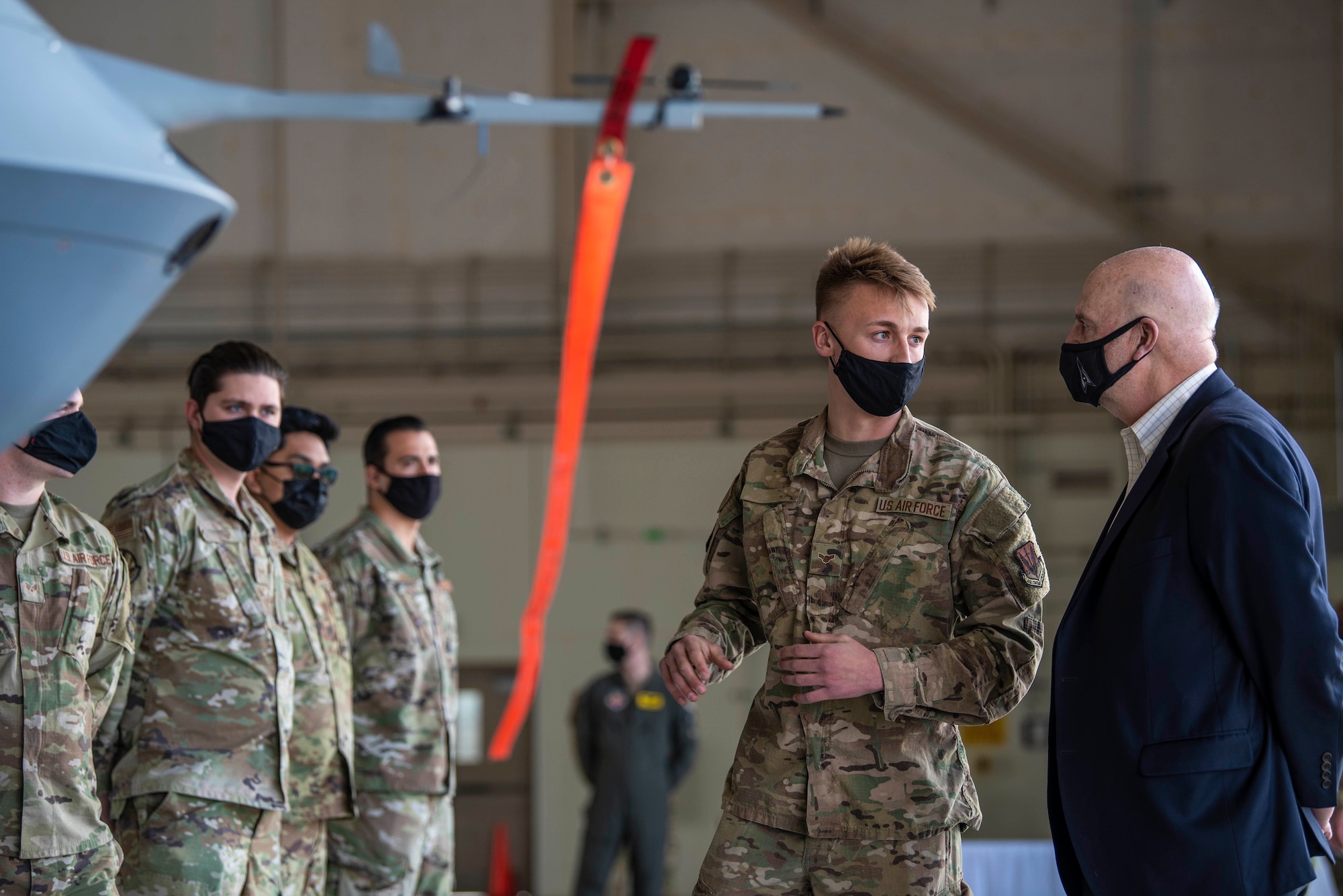
Roth escapes Pentagon “bubble” to learn directly from Airmen and Guardians
Acting Secretary of the Air Force John P. Roth travelled recently to bases in Ohio, Utah, Nevada and California to review programs, meet Airmen and Guardians, receive updates from assorted commanders
www.af.mil
- Joined
- 21 April 2009
- Messages
- 13,761
- Reaction score
- 7,703
NG ad I think but interesting nonetheless

 breakingdefense.com
breakingdefense.com

The B-21 Raider: A Marvel Of Digital Development - Breaking Defense
Risk reduction is vital in the development of this new Air Force bomber. Northrop Grumman is driving risk out of the program with digital capabilities throughout design, build, prototype, and test.
RavenOne
ACCESS: Top Secret
- Joined
- 18 June 2008
- Messages
- 1,005
- Reaction score
- 2,690
B-21 Flight Test aircraft build progresses while B-21 Combined Test Force takes shape
Gen. Timothy Ray, the Commander of Air Force Global Strike Command and Air Forces Strategic-Air, U.S. Strategic Command, visited several organizations across the bomber test enterprise to receive
www.edwards.af.mil
According to the article ‚
Gen. Timothy Ray, the Commander of Air Force Global Strike Command and Air Forces Strategic-Air, U.S. Strategic Command, visited several organizations across the bomber test enterprise to receive first-hand updates on the progress of the B-21 program during a visit to Edwards Air Force Base and Plant 42, in California, May 5-6
His first stop was to Edwards AFB, where he met with the 419th Flight Test Squadron, Global Power Bomber Combined Test Force. He was updated on the organization’s continued efforts to test upgrades to the B-2 Spirit in order to modernize the B-2 and integrate future weapons systems.
He then visited the 420th Flight Test Squadron, B-21 CTF. Ray was briefed on the construct for the Combined Test Force and the benefits it will bring to bear for the B-21 program. The B-21 CTF is an integrated team of test professionals from Northrop Grumman, 420th FLTS and Detachment 5, Air Force Operational Test and Evaluation Center. The B-21 CTF provided a comprehensive update on the team’s readiness to support the B-21 program when it transitions into flight test.
On the following day, Ray visited the Northrop Grumman facilities on Air Force Plant 42 in Palmdale, California, and saw the significant progress made on the build of the first flight test aircraft that will one day make its way to Edwards AFB for flight testing. Northrop Grumman personnel updated Ray on build progress and the value of building those test articles using the same production line, tooling and procedures that will manufacture the final production aircraft.
And the lovely images assigned to the above article and got slightly excited was hoping to see lol
cheers
Attachments
Last edited:
- Joined
- 21 April 2009
- Messages
- 13,761
- Reaction score
- 7,703
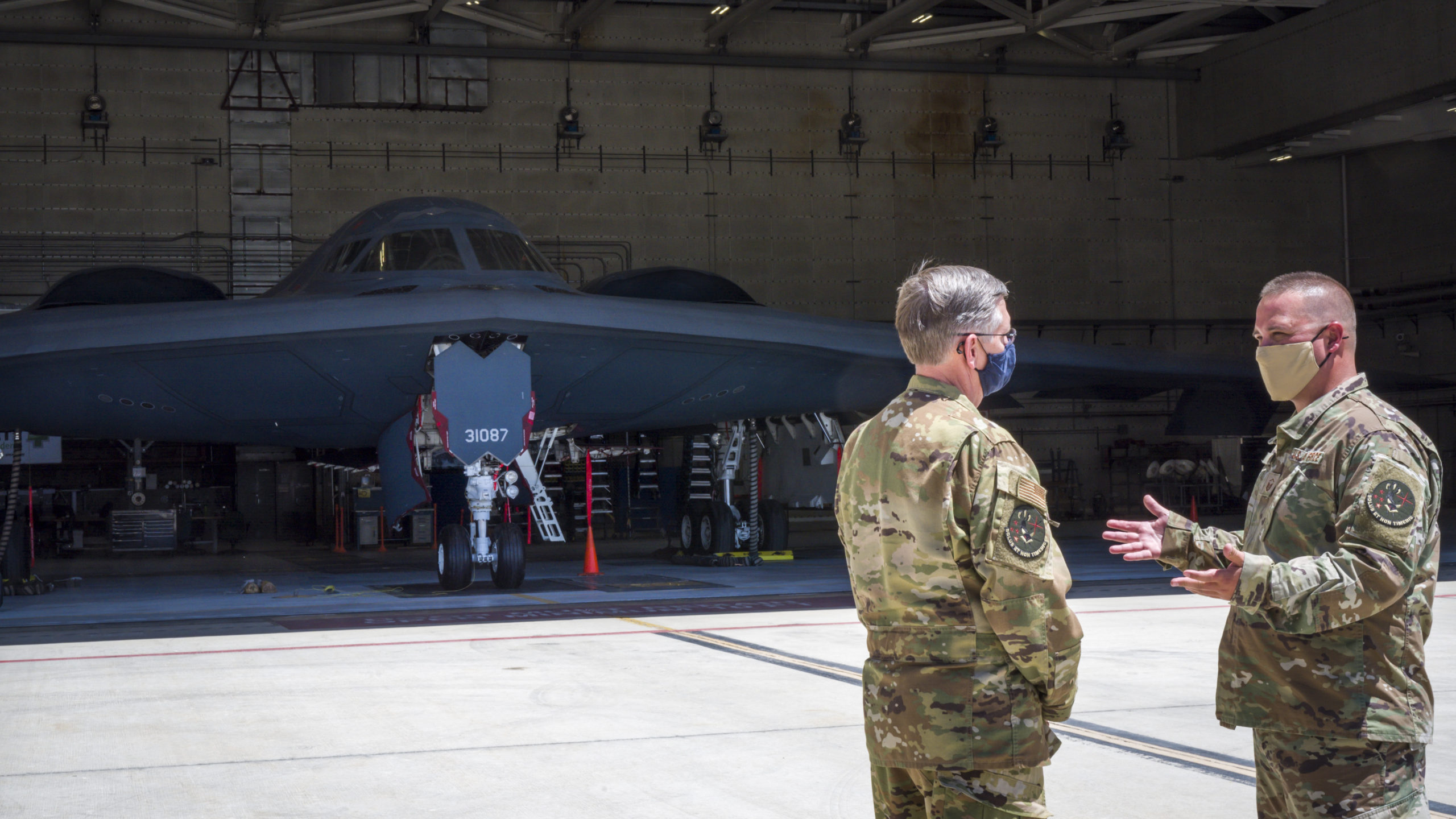
One Year From First Flight, Ray Tours B-21 Factory, Bomber Test Enterprise | Air & Space Forces Magazine
AFGSC boss Gen. Timothy M. Ray toured Northrop Grumman’s B-21 production facility and the test enterprise that will put the jet through its paces next year.
A year from flight means rollout in.... 6 months?
One Year From First Flight, Ray Tours B-21 Factory, Bomber Test Enterprise | Air & Space Forces Magazine
AFGSC boss Gen. Timothy M. Ray toured Northrop Grumman’s B-21 production facility and the test enterprise that will put the jet through its paces next year.www.airforcemag.com
FighterJock
ACCESS: Above Top Secret
- Joined
- 29 October 2007
- Messages
- 5,613
- Reaction score
- 5,946
A year from flight means rollout in.... 6 months?
One Year From First Flight, Ray Tours B-21 Factory, Bomber Test Enterprise | Air & Space Forces Magazine
AFGSC boss Gen. Timothy M. Ray toured Northrop Grumman’s B-21 production facility and the test enterprise that will put the jet through its paces next year.www.airforcemag.com
I hope that the B-21 is rolled out in six months rooster. Though I would not like to say for sure, a lot of things can change in six months.
- Joined
- 9 October 2009
- Messages
- 21,979
- Reaction score
- 13,647
Assuming nothing goes wrong.
Here's hoping. But I have to say everyone who seems to know anything about the project seems almost bubbly about it. After the last couple decades of defense department project fails it seems almost inexplicable how they could manage to produce an intercontinental stealth bomber on time and budget. Something I didn't know until just the last week is that the project is being managed by the RCO - which seems kinda bonkers to me, for such a big ticket item. But that group does seem to be part of the success story. I get the impression RCO is the champion of "good enough" and "off the shelf".Assuming nothing goes wrong.
- Joined
- 21 April 2009
- Messages
- 13,761
- Reaction score
- 7,703
My pure speculation is that the B-21 is the great beneficiary of billions of prior black budget R&D. The cost of the first bomber is probably $20 billion if you took all this into account.Here's hoping. But I have to say everyone who seems to know anything about the project seems almost bubbly about it. After the last couple decades of defense department project fails it seems almost inexplicable how they could manage to produce an intercontinental stealth bomber on time and budget. Something I didn't know until just the last week is that the project is being managed by the RCO - which seems kinda bonkers to me, for such a big ticket item. But that group does seem to be part of the success story. I get the impression RCO is the champion of "good enough" and "off the shelf".Assuming nothing goes wrong.
I agree, but I also think that the specs were written to only use established tech with minimal gold plating and goal post moving. That's the "good enough". The R&D of black projects, like the speculative RQ-180 for instance, meant that "off the shelf" included a lot of established technologies - ie, it was a big shelf.My pure speculation is that the B-21 is the great beneficiary of billions of prior black budget R&D. The cost of the first bomber is probably $20 billion if you took all this into account.Here's hoping. But I have to say everyone who seems to know anything about the project seems almost bubbly about it. After the last couple decades of defense department project fails it seems almost inexplicable how they could manage to produce an intercontinental stealth bomber on time and budget. Something I didn't know until just the last week is that the project is being managed by the RCO - which seems kinda bonkers to me, for such a big ticket item. But that group does seem to be part of the success story. I get the impression RCO is the champion of "good enough" and "off the shelf".Assuming nothing goes wrong.
- Joined
- 21 April 2009
- Messages
- 13,761
- Reaction score
- 7,703
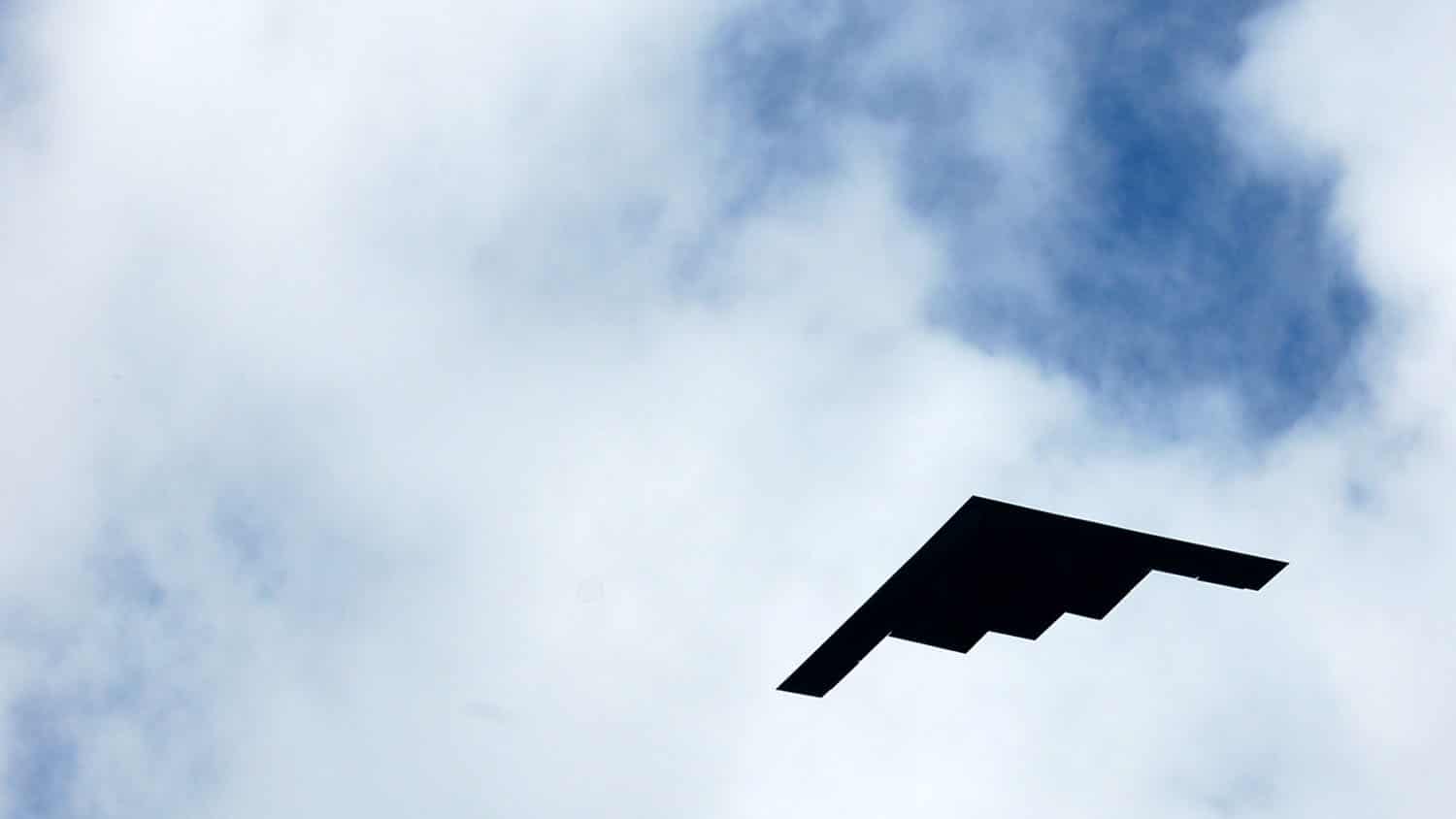
How a Tougher Skin Could Change the Shape of Stealth Aircraft
A new material promises to make stealth aircraft even stealthier.
- Joined
- 6 August 2007
- Messages
- 3,900
- Reaction score
- 6,001
Initial results (extracted from the link above from @bobbymike ):
For one thing, lab testing finds that the ceramic is more radar absorbent than the existing polymers, being able to absorb 90% or more of the energy from radar. It is, in effect, much harder for radar to “see.”
In addition, the material is water-resistant and harder than sand. In other words, it can better withstand harsh conditions.
What’s more, the ceramic material retains its radar-absorbent characteristics at temperatures as high as 1,800 C (and as cold as -100 C).
- Joined
- 29 September 2006
- Messages
- 1,798
- Reaction score
- 1,363
Interesting, but most ceramics are wont to fracture. What happens with the usual flexing & thermal expansions of airframes? Instead of peeling polymer coatings, shall we have crumbling ceramics?
How a Tougher Skin Could Change the Shape of Stealth Aircraft
A new material promises to make stealth aircraft even stealthier.news.ncsu.edu
That said, I'm sure there are a few avenues of approach that could possibly mitigate that.
Similar threads
-
USAF to Retire B-1, B-2 in Early 2030s as B-21 Comes On-Line
- Started by flateric
- Replies: 323
-
-
-
-

